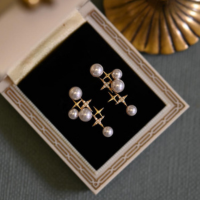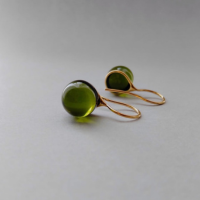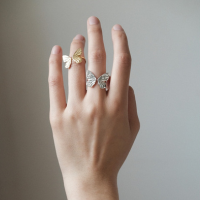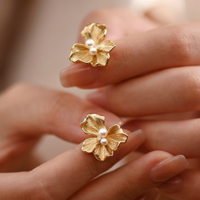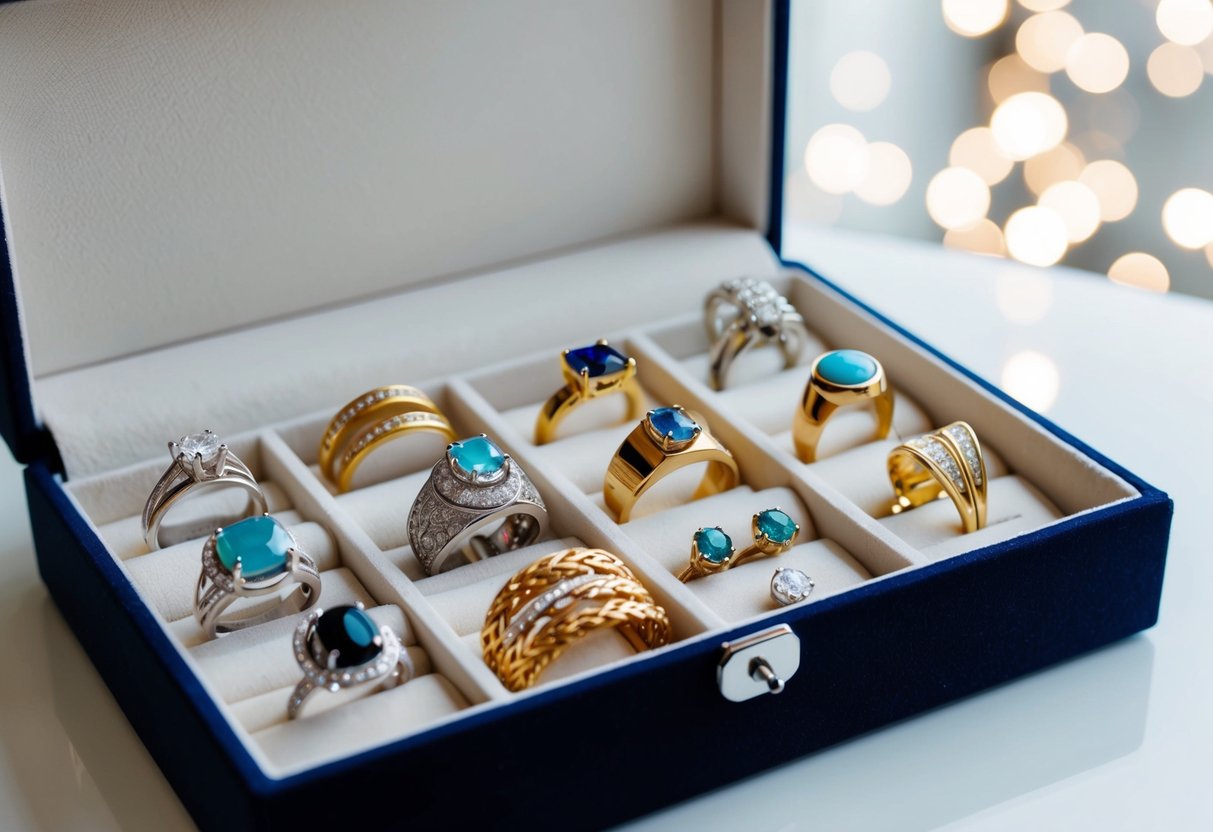
How Long Does Permanent Jewelry Last
Check out our personalized jewelry collections! (kids drawing jewelry, coin jewelry, wire jewelry, fingerprint jewelry, handwriting jewelry, and more)
Permanent jewelry is a unique trend that's taking the fashion world by storm. Unlike traditional pieces, permanent jewelry is designed to stay on, creating a seamless and lasting accessory option. Typically, permanent jewelry can last a lifetime if cared for properly and is often tied to specific materials like gold or platinum.
The durability of permanent jewelry largely depends on the materials used and the craftsmanship involved. High-quality metals and precision in design ensure these pieces remain intact over the years. We find that regular maintenance and mindful care are crucial to keep that original shine and beauty.
Environmental factors and lifestyle choices can also impact how long these pieces last. Daily activities and exposure to elements might require us to consider occasional adjustments or replacements. The joy of owning permanent jewelry lies in its lasting presence and personal connection.
Key Takeaways
- Permanent jewelry can last a lifetime with proper care.
- High-quality materials and craftsmanship are crucial for durability.
- Lifestyle and environment affect longevity.
Defining Permanent Jewelry
Permanent jewelry offers a unique twist to our style with pieces designed to stay on. Unlike traditional jewelry, there's no clasp for taking them off. These pieces often include bracelets, anklets, or necklaces that are welded, soldered, or clamp onto us.
The idea is simple: wear them 24/7. They aren’t meant to be removed for showers, sleep, or even the gym. This makes them a part of our everyday life, reflecting our personal style consistently.
Some popular materials include gold, sterling silver, and titanium. These are chosen for their durability and resistance to tarnishing, making them suitable for daily wear.
People love the concept because it symbolizes permanence and commitment—often given to celebrate friendships, love, or special life moments. It's a beautiful way to keep something significant close to us.
Maintenance is easy. We won’t need to think about putting it on or taking it off. Just regular cleaning and check-ups ensure that our jewelry looks its best and lasts.
Materials and Durability
When choosing permanent jewelry, the type of metal is crucial. Different metals offer different levels of durability and maintenance needs. Let's explore some common materials used in permanent jewelry.
Gold and Its Alloys
Gold is a popular choice due to its resistance to rust and tarnish. Pure gold, known as 24k, is very soft and can scratch easily. Gold alloys are a great alternative, mixing gold with metals like copper or silver to improve strength. 14k and 18k gold are perfect balances between durability and purity. They withstand daily wear while maintaining luster. We often recommend these alloys for those seeking long-lasting pieces.
Key Points:
- Gold Carats: 24k (pure), 18k, 14k
- Alloys Offer: Increased strength
- Great for: Daily wear
Sterling Silver and Tarnishing
Sterling silver is composed of 92.5% silver and 7.5% other metals, often copper. While beautiful, it is prone to tarnishing. We suggest regular cleaning to maintain its shine. Rhodium-plated silver is an option for added protection. It helps slow tarnishing and adds a smoother finish. Understanding care is essential to keep sterling silver in great condition for years.
Tips to Prevent Tarnish:
- Store in: Anti-tarnish pouches
- Use: Sterling silver cleaner
- Rhodium Plating: Enhances durability
Alternative Metals
Alternative metals like stainless steel, titanium, and tungsten offer excellent durability. Stainless steel is resistant to corrosion and scratches, making it ideal for active wearers. Titanium is lightweight yet strong, perfect for those sensitive to other metals. Tungsten, known for its hardness, is great for those seeking modern and robust options. These metals come with unique benefits and are becoming more popular in fashion jewelry.
Advantages:
- Stainless Steel: Scratch-resistant
- Titanium: Hypoallergenic
- Tungsten: Extremely hard
Craftsmanship and Longevity
Permanent jewelry gains its lasting quality through the skill of the jeweler and the methods used in creating each piece. High-quality craftsmanship ensures the jewelry will stay beautiful and durable for many years.
Jeweler Expertise
The expertise of a jeweler plays a critical role in the longevity of permanent jewelry. Experienced jewelers have an eye for detail and know how to work with different materials. They can choose the right mix of metals and stones that are not only attractive but also durable.
We rely on their skill to ensure the pieces are carefully made. A professional jeweler's touch adds strength and resilience. This expertise prevents weak spots that can lead to breaks. Our trust in their passion and skills makes a big difference in the lifespan of jewelry.
Construction Techniques
The construction techniques used in making permanent jewelry are vital for its longevity. Jewelers employ various methods like welding or laser soldering. These methods join metals without needing clasps, reducing breakage points.
Crafting techniques also include choosing durable metals and stones. Metals like gold and stainless steel are less prone to tarnishing or wear. Techniques such as tension setting securely hold stones, making sure they stay in place.
By focusing on these effective techniques, we achieve both strength and appealing design. This combination adds lasting value and ensures that the jewelry withstands daily wear while maintaining its elegance.
Maintenance and Care
Taking proper care of permanent jewelry will ensure it stays beautiful and lasts longer. Our focus is on cleaning practices and tips to protect against wear and tear.
Cleaning Practices
Maintaining the sparkle of permanent jewelry requires regular cleaning. We recommend using a mild soap mixed with warm water. Gently scrub the jewelry with a soft toothbrush to remove dirt and oils. Avoid using harsh chemicals that might cause damage or tarnish the metal.
Dry thoroughly after cleaning to prevent water spots. Use a soft microfiber cloth for the best results. For an extra shine, polish your jewelry with a jewelry cleaning cloth.
For pieces with stones, check if the settings are secure during cleaning. A professional jeweler can help with more delicate cleaning or repairs if needed.
Wear and Tear Prevention
To avoid wear and tear, remove jewelry when engaging in activities that might cause damage. This includes swimming, exercising, or doing heavy chores. Sweat, chlorine, and rough surfaces can scratch or weaken jewelry.
Store accessories carefully when not wearing them. Use a jewelry box or a soft pouch to prevent scratches and tangling. Keep pieces separated to avoid any unwanted friction.
It's also essential to inspect your jewelry regularly. Look for signs of wear or damage, like loose stones or worn clasps. Regular monitoring can prevent small issues from becoming bigger problems.
Environmental Factors
Environmental factors can affect the lifespan and appearance of our permanent jewelry. Let's explore how different chemicals and physical impacts play a role in this.
Chemical Exposure
Jewelry can change over time if it's exposed to certain chemicals. Everyday substances, such as perfumes, lotions, and cleaning agents, might cause metal to tarnish or lose its shine. Our jewelry might also react to strong chemicals like chlorine, which is common in pools. These reactions can weaken the jewelry or change its color.
To keep our permanent pieces looking great, it's recommended that we limit their exposure to such chemicals. Removing jewelry before using these products or swimming in chlorinated pools can help keep it in good condition.
Physical Impacts
Physical impacts can also affect how long our jewelry lasts. Activities like working out or manual labor can cause scratches or dents. Over time, these impacts can wear down the material or cause clasps and links to weaken.
It's important that we handle our jewelry with care, especially during rough activities. For example, taking off rings or bracelets when lifting heavy objects can prevent damage. Regular inspections can help us notice any wear and tear early, so we can take action to fix it before it worsens.
Lifestyle Considerations
Choosing permanent jewelry involves thinking about how it fits into our daily lives and work environments. It’s important to consider how activities and professional expectations might affect its longevity.
Daily Activities
Our everyday activities can have a big impact on permanent jewelry. For instance, if we're active and enjoy sports or frequent exercises, the risk of scratching or damaging our pieces can increase.
Water activities, like swimming or showering, may also affect the jewelry, especially if it's not made from high-quality materials. Frequent exposure to water can potentially dull the shine or cause tarnishing. It's crucial to weigh convenience against the need for care, like removing or covering the jewelry during certain tasks.
If we often work with tools or handle materials that could snag or bend delicate pieces, choosing robust and durable materials becomes essential. By considering what we do every day, we can make smarter choices for our permanent jewelry.
Professional and Hobbyist Requirements
In professional settings, the type of work can influence how we wear permanent jewelry. For professionals in formal environments, subtle and classic pieces might be more suitable, adding elegance without being distracting. Meanwhile, those in creative fields might prefer bolder or customized designs that express personality.
For hobbyists, like those involved in crafts or working with their hands, durable and less intrusive designs could serve better. Safety and hygiene regulations can also dictate what’s acceptable in medical or food service professions. By evaluating our specific workplace needs, we can ensure that our jewelry complements rather than complicates our professional lives.
Customization and Personalization Effects
In the world of jewelry, customization and personalization are key. When we choose permanent jewelry, we often look for pieces that express our unique style.
With custom options, we can select materials like gold, silver, or platinum. These choices affect not just the look but also the lifespan of our pieces. Higher quality materials usually last longer.
Personalization can include adding names, initials, or special dates. This makes our jewelry more meaningful. Engraving or adding charms can add a personal touch without affecting the durability.
Styles vary from simple chains to intricate designs. Even the simplest pieces can have personal touches through color, texture, or finish. Each choice reflects our individual tastes.
Permanent jewelry offers a range of possibilities for each of us. By focusing on customization, we can ensure that our jewelry not only lasts but also tells our personal story.
Upgrade and Replacement Options
When it comes to permanent jewelry, we have a few options to consider if we want to change things up or replace our pieces. Sometimes, styles change, or maybe we just want a fresh look. Let’s explore what we can do.
Upgrading Jewelry:
- We can choose larger or more intricate chains.
- Adding charms or gemstones gives our piece a new sparkle.
- Consider upgrading to a higher-quality metal for a luxurious feel.
Replacement:
- If a piece breaks, we can often have it repaired.
- For major style changes, replacing old pieces with new designs might be the best choice.
It's important to remember that upgrades and replacements can be done with care. Working with a skilled jeweler ensures our pieces are handled safely. This way, we maintain the quality and uniqueness we cherish.
We might also want to update our jewelry to commemorate important life events. Birthdays, anniversaries, or personal achievements can be perfect occasions to refresh our collection.
Frequently Asked Questions
We're here to answer some common questions about permanent jewelry. We'll discuss costs, lifespans, and security concerns related to permanent jewelry pieces.
How much does permanent jewelry typically cost?
Permanent jewelry prices can vary widely. Costs usually depend on the type of metal and the design chosen. You can expect to pay from around $50 for simpler pieces to several hundred dollars for more intricate designs.
What are the downsides to opting for permanent jewelry?
Permanent jewelry cannot be removed easily, which might not suit everyone's lifestyle. Some people may experience minor irritation, especially if they have sensitive skin or allergies. It's important to ensure the correct fit to avoid discomfort.
Can permanent jewelry resist tarnishing over time?
Most permanent jewelry is made from high-quality metals such as gold, sterling silver, or platinum. These materials generally resist tarnishing, ensuring that your jewelry looks great for many years. However, exposure to harsh chemicals might affect the finish.
Are there any issues with airport security when wearing permanent jewelry?
Permanent jewelry usually doesn't set off airport metal detectors, but it's a good idea to inform security staff ahead of time. If necessary, they might perform a quick visual inspection to ensure everything is fine.
What is the average lifespan of a permanent bracelet?
Permanent bracelets are designed to last for many years. With proper care, you can expect a lifespan of at least several years, often even longer. Regular cleaning and avoiding exposure to harsh elements will help maintain their appearance.
Do permanent jewelry options include rings as well?
Yes, permanent jewelry options can include rings. Like bracelets, permanent rings are fitted to the wearer and cannot be easily removed. They are a unique choice for those who prefer their jewelry to stay in place without needing adjustments.

